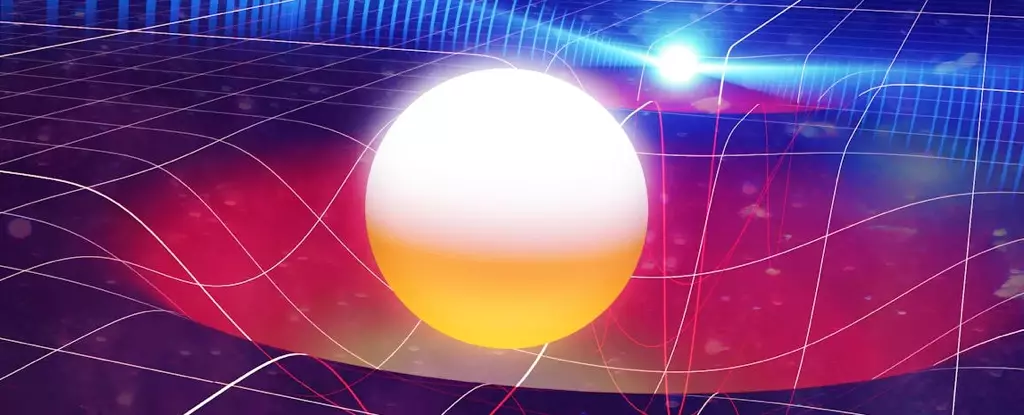Neutron stars, one of the most extreme celestial objects in the universe, are formed from the remnants of supergiant stars that have collapsed in on themselves. These incredibly dense stars pack more mass than our Sun into a sphere the size of a city. The inner core of a neutron star holds matter in states that cannot be replicated on Earth, making them a fascinating subject for study.
NASA’s Neutron star Interior Composition Explorer (NICER) mission on the International Space Station aims to unravel the mysteries of neutron stars. This X-ray telescope detects radiation from hot spots on neutron star surfaces, allowing scientists to map these spots and determine the star’s mass and size. By analyzing the timing and energy of X-rays emitted, researchers can uncover crucial information about the matter inside neutron stars.
Measuring the mass of neutron stars is a critical step in understanding their internal structure. By studying PSR J0437-4715, the nearest millisecond pulsar, scientists have been able to use radio waves to independently determine the pulsar’s mass. This data is essential in refining our understanding of neutron stars and the exotic matter that resides in their cores.
Einstein’s theory of general relativity plays a key role in measuring the mass of neutron stars. The Shapiro delay effect, caused by the warping of space-time around massive objects like neutron stars and their white dwarf companions, allows for precise measurement of the stars’ mass. By observing pulsars like PSR J0437-4715, researchers can study gravitational waves and gather valuable insights into the fundamental physics governing these extreme objects.
The equation of state of matter inside neutron stars dictates their size, mass, and behavior under extreme conditions. A softer equation of state suggests the presence of exotic matter, such as quarks or hyperons, while a harder equation indicates a more stable core of neutrons. By ruling out the softest and hardest equations of state, scientists are one step closer to decoding the intricate composition of neutron star cores.
Recent measurements of PSR J0437-4715 have provided the most precise data yet on the equation of state for neutron stars at intermediate densities. These findings, coupled with observations of gravitational waves from colliding neutron stars, offer a more comprehensive understanding of the inner workings of these cosmic giants. The presence of exotic matter in neutron star cores remains a tantalizing possibility, prompting further research and exploration.
Murriyang, the Parkes radio telescope in New South Wales, has played a crucial role in supporting NASA missions and advancing our knowledge of the universe. By providing essential data on neutron stars and their mass, Murriyang has contributed to groundbreaking discoveries in astrophysics. From assisting with the Apollo 11 moonwalk to weighing in on neutron star physics, this iconic telescope continues to shape our understanding of the cosmos.
The study of neutron stars and the extreme physics that govern them offer a glimpse into the fundamental laws of the universe. With ongoing research and technological advancements, we are poised to unravel the mysteries of these enigmatic celestial bodies and gain valuable insights into the nature of matter under extreme conditions.


Leave a Reply